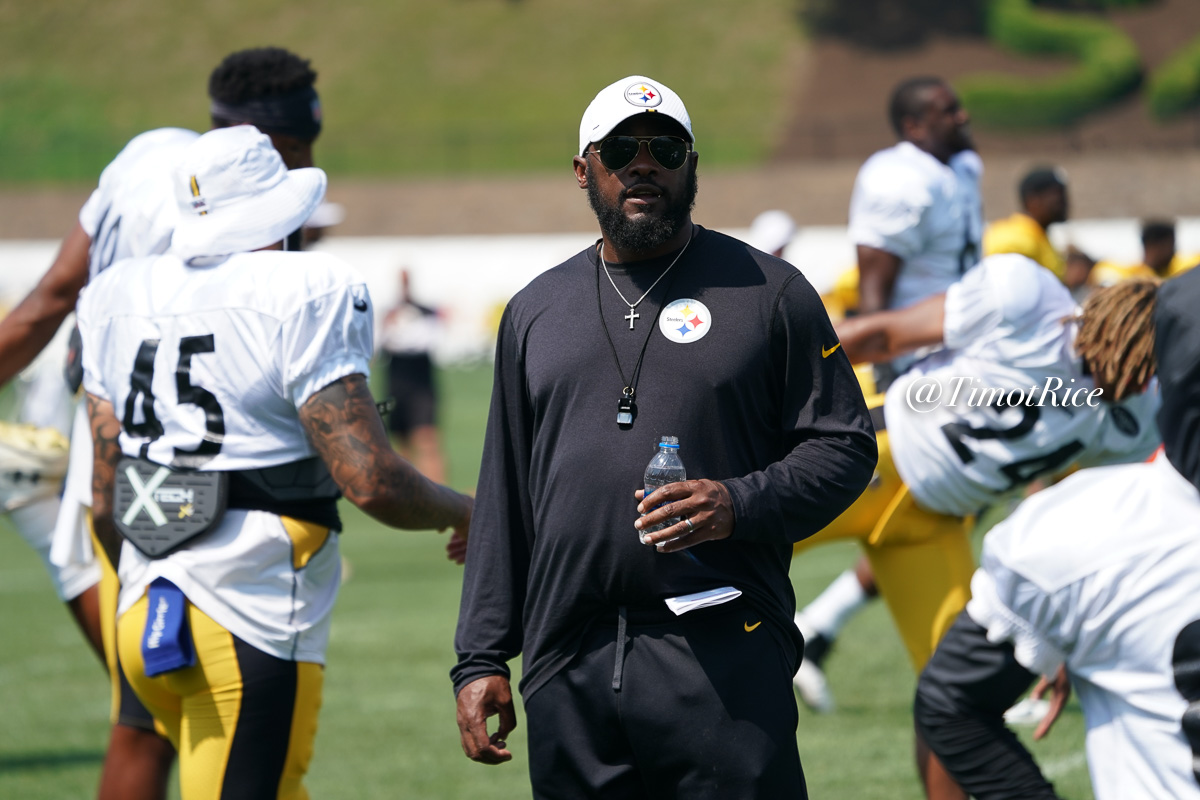In a normal year, the best player evaluations come once they get inside stadiums. That’s a mantra Mike Tomlin’s repeated time and time again in his Steelers’ tenure, quelling the enthusiasm over the typical camp sleeper. 2020 is anything but normal. There are no preseason games. Pittsburgh’s first time inside a stadium against an opponent won’t be until Week 1 of the regular season. So for those fighting for a roster spot, practice is all they have. Tomlin says the Steelers are attempting to create as much of a game atmosphere as possible and that players better have the right mentality entering the heart of training camp.
On a Thursday Zoom call with the media, Tomlin was asked if there are players who perform better under the lights and if so, how those players need to adjust given the circumstances.
“If there is you won’t get an opportunity to display it in this environment,” he said. “So he better be a practice player.”
Starting Monday, the team will begin their allotted 14 padded practices. A few days later, the roster will need to be set to 53 gearing up for the opener against the New York Giants. There’s no question trying to replicate game scenarios in practice is tough to do but those who meet the challenge will have a leg up when it comes to final cutdowns.
“I’m talking, getting an opportunity to evaluate situational awareness. Things that you don’t often do in a practice setting boxes that often get checked and preseason stadiums. Such as a guy’s ability to move from playing linebacker to left guard on punt team and knowing when to take the field and being engaged in transitional, things like that. Or guys being down and distance aware as the ball moves and the chains move. Oftentimes in the practice setting of the ball does not move, or the ball moves in a very scripted way.”
And you’ll see that in any training camp practice. There’s a rhythm, flow, expectation for how practice is going to work: warmups, individual, one-on-one, team sessions, with special teams mixed inbetween 11v11. Or as Tomlin mentioned, the LOS doesn’t always change. In many team drills, the ball is always placed to the same spot. Players know exactly where to line up. In a game, it’s always shifting and players have to react on the fly, making sure they’re lined up legally.
Even young guys can quickly pick up on what the next drill will be, an advantage they won’t as easily have in the chaos of an actual game. And inside a stadium, the refs don’t stop just because you’re not ready.
Those who can carry those traits to a game certainly can catch a coaches’ eye. Take Ulysees Gilbert III. In the preseason opener last season, he picked off a pass on a two-point conversion, falling to the ground after jumping the route. In college, he’d be down by contact. In the NFL, he isn’t. He was aware of that, springing to his feet and trying to make a play. That’s awareness. Or as Tomlin points out, guys playing on multiple special teams units in addition to their offensive/defensive position.
Capturing that in practice is difficult. That’ll be the Steelers’ aim over the next two weeks and the players challenge to respond in a noticeable way.








